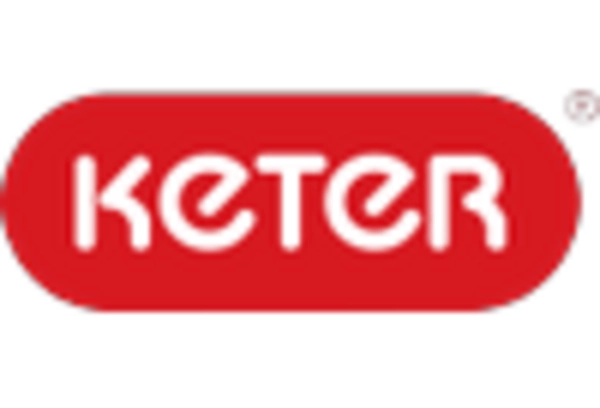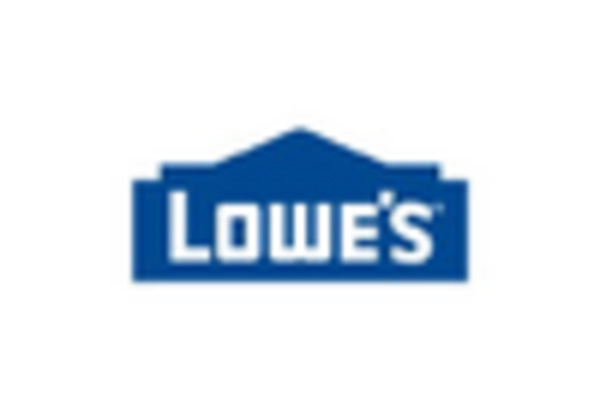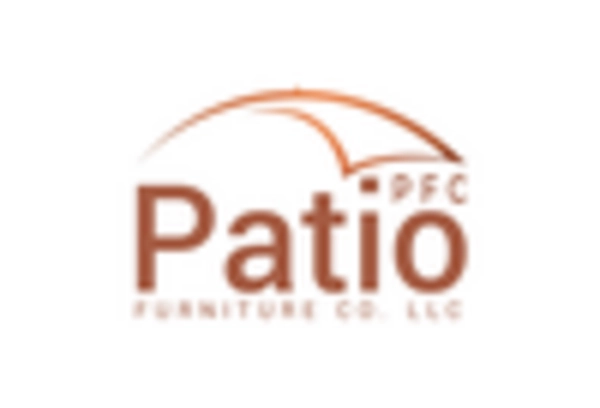The Garden Furniture Market is currently characterized by a dynamic competitive landscape, driven by increasing consumer demand for outdoor living spaces and sustainable products. Key players such as IKEA (SE), Home Depot (US), and Trex Company (US) are strategically positioning themselves to capitalize on these trends. IKEA (SE) focuses on innovation and sustainability, emphasizing eco-friendly materials in its product lines, while Home Depot (US) leverages its extensive distribution network to enhance customer accessibility. Trex Company (US), known for its composite decking, is expanding its offerings to include a wider range of outdoor furniture, thereby diversifying its portfolio and appealing to environmentally conscious consumers. Collectively, these strategies contribute to a competitive environment that prioritizes sustainability and innovation, shaping consumer preferences and market dynamics.
In terms of business tactics, companies are increasingly localizing manufacturing to reduce lead times and enhance supply chain efficiency. This approach appears to be particularly relevant in a moderately fragmented market, where numerous players vie for market share. The collective influence of key players, including Lowe's (US) and Polywood (US), suggests a trend towards consolidation, as companies seek to optimize operations and improve their competitive positioning through strategic partnerships and acquisitions.
In August 2025, IKEA (SE) announced a partnership with a leading sustainable materials company to develop a new line of garden furniture made entirely from recycled plastics. This strategic move not only aligns with IKEA's commitment to sustainability but also positions the company as a leader in eco-friendly outdoor solutions. The collaboration is expected to enhance brand loyalty among environmentally conscious consumers, thereby strengthening IKEA's market presence.
In September 2025, Home Depot (US) launched an innovative online platform that utilizes augmented reality to help customers visualize garden furniture in their outdoor spaces. This digital transformation initiative is significant as it enhances the customer shopping experience, potentially increasing conversion rates and customer satisfaction. By integrating technology into its sales strategy, Home Depot (US) is likely to gain a competitive edge in the increasingly digital marketplace.
In October 2025, Trex Company (US) unveiled a new line of outdoor furniture that incorporates smart technology, allowing users to control lighting and heating through a mobile app. This strategic innovation reflects a growing trend towards the integration of technology in outdoor living products, catering to the evolving preferences of tech-savvy consumers. By embracing smart technology, Trex Company (US) is poised to differentiate itself in a crowded market, appealing to a demographic that values convenience and modernity.
As of October 2025, the Garden Furniture Market is witnessing a shift towards digitalization, sustainability, and technological integration. Strategic alliances among key players are increasingly shaping the competitive landscape, fostering innovation and enhancing product offerings. The evolution of competition appears to be moving away from price-based strategies towards a focus on technological advancements, sustainability, and supply chain reliability. This trend suggests that companies that prioritize innovation and adaptability will likely emerge as leaders in the market.

















Leave a Comment